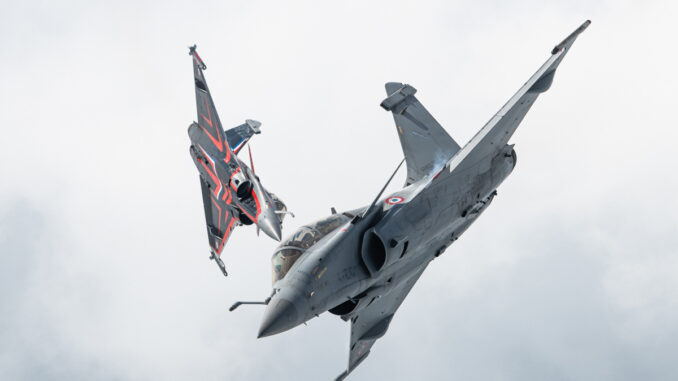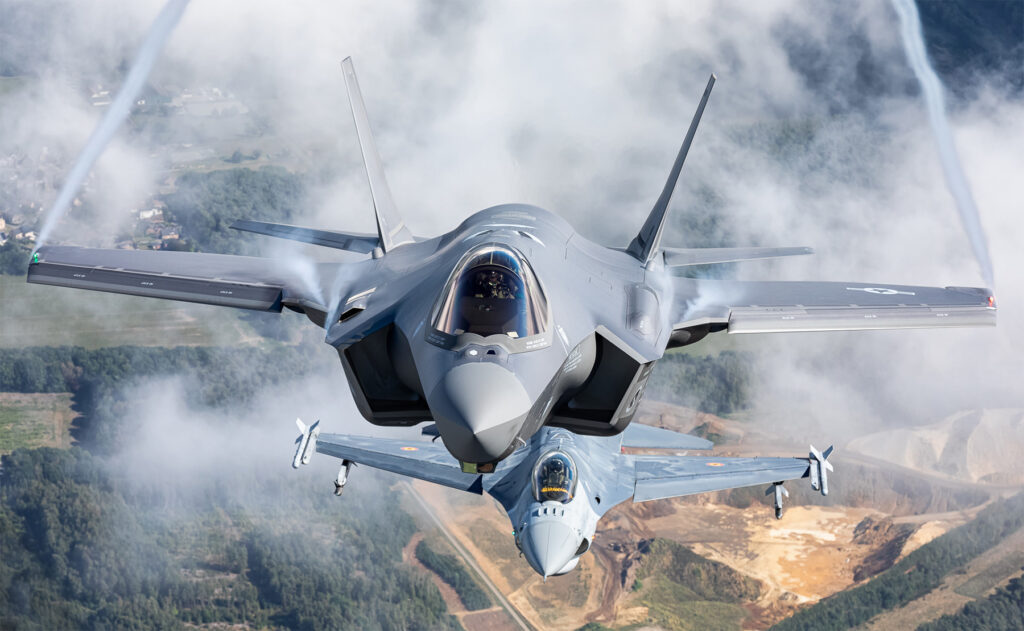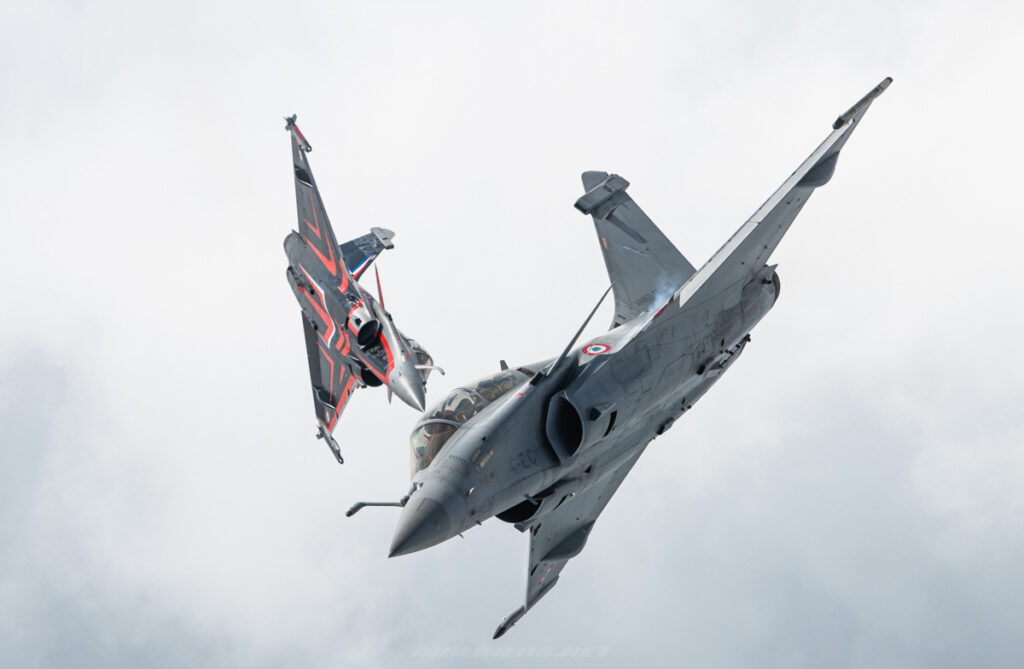
More than thirty pilots from nine NATO countries went head-to-head in an air combat exercise in Ramstein, improving skills and coordination.
In brief
At Ramstein air base in Germany, more than thirty fighter pilots from nine NATO countries took part in an unprecedented exercise to hone their air combat skills and improve coordination between allies. The exercise, dubbed “Ramstein 1v1”, involved a variety of fighter aircraft, including F-35As, F-16s, Eurofighter Typhoons, Rafales and F/A-18s. The aim was to reinforce basic combat manoeuvring skills and prepare the air force for potential conflicts with Russia and China.

Ramstein air combat exercise: Objectives and implications
Objectives of the Ramstein 1v1 exercise
The “Ramstein 1v1” exercise brought together more than thirty pilots from nine NATO countries, including the United States, the United Kingdom, Norway, the Netherlands, Belgium, Denmark, Finland, France and Germany. The main aim of the event was to reinforce air combat skills, a fundamental aspect of fighter pilot training. According to Lieutenant-Colonel Michael Loringer, USAFE Chief of Weapons and Tactics, basic air combat handling is crucial for testing pilots’ reaction time, physical endurance and situational awareness.
Air combat manoeuvres, or ‘dogfighting’, require quick decisions and precise responses in the face of an adversary, where every second can be decisive. This exercise simulated realistic scenarios and boosted pilots’ confidence in their own capabilities and those of their aircraft.
Diversity of aircraft and technical implications
The exercise involved a variety of fighter aircraft, including F-35A Lightning IIs, F-16 Fighting Falcons, Eurofighter Typhoons, French Rafales, F/A-18 Hornets and A-4 Skyhawks. This diversity has enabled pilots to train against different types of aircraft, each with its own unique characteristics and capabilities.
For example, the F-35A, with its stealth capabilities and advanced sensors, offers a significant technological advantage, while the F-16 is renowned for its manoeuvrability and versatility. The Eurofighter Typhoons and Rafales, meanwhile, are fourth-generation European fighters with advanced air-to-air and air-to-ground combat capabilities.
This variety of aircraft has not only improved pilots’ skills in combat manoeuvres against different adversaries, but has also fostered interoperability between NATO air forces, a crucial aspect in the event of multinational conflict.
Geopolitical context and preparation for potential conflicts
The ‘Ramstein 1v1’ exercise took place as Russia continues to gain ground in Ukraine, exacerbating tensions with NATO. This situation has prompted allied air forces to focus more on improving their air combat skills, anticipating the possibility of future conflicts with advanced air forces, particularly those of Russia and China.
In September last year, the US Air Force relaunched the famous William Tell air competition, which had been suspended for almost two decades due to intensive operations in the Middle East. Another William Tell competition is planned for 2025, underlining the growing importance of air combat readiness.
General James Hecker, USAFE Commander, announced that NATO pilots would also be putting their newly honed offensive and defensive manoeuvres to the test in a major new exercise, ‘Ramstein Flag’, scheduled to take place in Greece at the end of 2024. This intensive preparation aims to ensure that allied air forces are ready to deter any potential aggression.

Implications for coordination and trust between allies
The Ramstein exercise also underlined the importance of trust and coordination between NATO allies. American teams from RAF Lakenheath in England helped to maintain the Royal Norwegian Air Force’s F-35s, while Ramstein’s 86th Airlift Wing provided logistical support and flightline operations.
The exercise focused on operational readiness and confidence building, with integrated friendly competition. A memorable tradition was observed at the end of the exercise: a piano was burnt in tribute to fallen fighter pilots, a custom dating back to the Second World War.
Lieutenant-Colonel Loringer emphasised that successful military operations require exceptional teamwork, which is often crucial to survival. As a pilot, it is essential to trust your team-mate. This trust is reinforced by joint exercises such as ‘Ramstein 1v1’, which build strong relationships between pilots and allied air forces.
The “Ramstein 1v1” exercise marked an important step in preparing NATO air forces for potential conflicts. By bringing together pilots from nine countries and involving a variety of fighter aircraft, the event strengthened air combat skills, improved coordination and built trust between allies. As tensions with Russia and China continue to rise, exercises such as this are crucial to ensure that NATO’s air forces are ready to deter aggression and defend the security of their member nations.
War Wings Daily is an independant magazine.